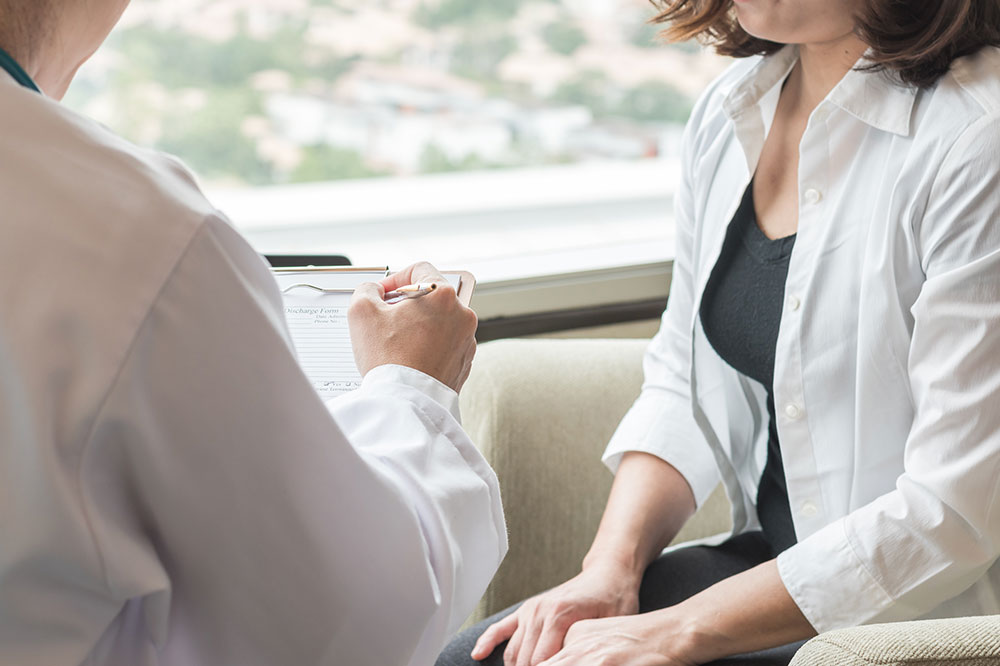
Breast cancer – Symptoms, causes, and management
Breast cancer occurs when the cells in the breasts multiply abnormally and sometimes spread to nearby organs. The condition can be categorized into different types based on the region of the breast where it originated. Although breast cancer mainly affects women, it is diagnosed in men in rare cases. The condition can be managed with various treatments and lifestyle modifications. Read on to learn more about its symptoms, causes, treatments, and remedies.
Symptoms
The disease manifests differently in different individuals. But, experts have narrowed down a few signs that are common in many patients. These include a lump in the breast or underarm region, irritation on the skin of the breast, pain in the nipple area or breast, dimpling in the skin of the breast, and redness and flaky skin on the nipple. Further, one may notice a discharge from the nipple other than breast milk or a change in the breast size.
These symptoms may also be observed when suffering from other cancers or non-cancerous tumors. In any case, it is crucial to get any lump, change, or mass on the breast checked by a healthcare professional. Doctors usually perform physical examinations and recommend mammograms to diagnose the condition.
Causes
Breast cancer results from the multiplication of abnormal cells in the breast. These cells divide rapidly and sometimes form lumps or masses. There is no exact cause of this abnormal multiplication. But, researchers have found that certain factors can increase a person’s risk of developing this condition. Genetic predisposition is the biggest risk factor. Around five to ten percent of breast cancer cases are linked to gene mutations. The mutations are passed down from one generation to the next. Some genes, such as BRCA1 and BRCA2, can increase the risk of not only breast but also ovarian cancer.
Age and gender also play a role in the disease’s development. Studies have found that the risk increases with age, and women are more susceptible than men. Other risk factors include personal history, radiation exposure, and menopause.
Treatment options
There are many treatments for breast cancer. Doctors develop a plan after considering factors like the tumor’s location and size and how far the disease has spread. They prescribe a combination of these options:
Surgery
Breast cancer surgery involves removing the cancerous tissue from the breast along with the surrounding normal tissue. It usually requires a short hospital stay followed by a few weeks of recovery.
Chemotherapy
Chemotherapy is recommended before surgery to reduce the size of the tumor. It can also be administered post surgery to kill any remaining cancer cells and reduce the chances of recurrence.
Hormone therapy
Hormone therapy reduces estrogen levels or stops the hormone from attaching to cancerous cells in the breast. It is mainly suggested after surgery to prevent a recurrence.
Home and natural remedies
The above treatments can lead to side effects that cause discomfort. Thankfully, some home remedies help tackle these side effects. Fatigue is one of the most common problems, and patients can manage it with light exercise. Exercise can also help build stamina and improve body function. Walking, cycling, and dancing are a few activities to add to the daily routine. Those who experience insomnia or sleeplessness can spend time meditating. Limiting screen time before bed and during the night can also help induce sleep.
Foods that help
Proper nutrition can support ongoing treatment and improve overall health. Leafy greens like kale, spinach, and chard are known to possess anticancer properties that help manage the symptoms and reduce the risk of breast cancer. Citrus fruits, fatty fish, and berries are other healthy choices.




